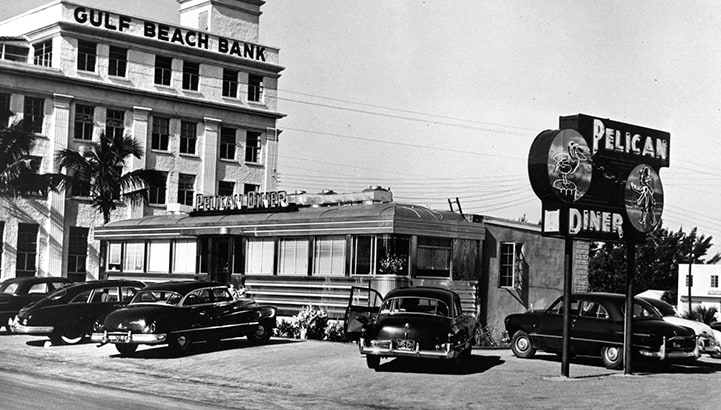

Since 1872, diners have been offering an array of typically ‘American’ foods on their menus. American diners are best known for having lengthy menus and long spacious counters. Diners were, and still are, very prevalent, especially within the midwest and northeastern regions. Over the years, American diners may have evolved, but, in some regions, they have also kept the older traditions of American diners alive. Some examples of famous American diners include Mickey’s Dining Car in St. Paul, MN, Skyliner Diner located in Rochester, NY, Pink Cadillac Diner in Natural Bridge, VA, and 66 Diner located in Albuquerque, NM
As the years have progressed, so has the competition within the restaurant business. American diners have had to keep up with large chain and quick service restaurant rivals, so as a result many American diners began to offer an eclectic menu with specialty food items that customers would flock to in order to experience these offerings. Within the last decade well known chefs like Guy Fieri have put diners back on the map and in the forefront thanks to food shows like Diners, Drive-Ins, and Dives that debuted in April 2007 .
Culinary television has made a big impact on diners in the past few years. Diners, Drive-Ins, and Dives gave them added exposure. Diners have gone from offering bacon and eggs all day, to having specialty items that make them unique, like chicken and waffles, awesome grilled cheese, slow roasted meats, and giant sandwiches to name a few. There is even a Diners, Drive-Ins, and Dives app, where customers can search for famous diners within a specific region.
As consumers evolve, so do diners. For example, consumers are more health conscious when it comes to eating. As a result, more and more diners are offering healthier food options. Nowadays, customers have the option of steamed vegetables and non-fried foods in smaller portions. The concept of farm-to-table has grown in popularity. This concept is focused on providing fresh ingredients, from local farmers, for their dishes. Customers love the idea that their dishes are made from fresh ingredients that are healthy for them.
In addition, the younger generations are always on the go. Many people do not have time to sit down and have a meal at a diner due to being busy. As a result, these generations have flocked to quick-service restaurants, leaving diners behind. Home meal replacement options have also become popular amongst the younger generations. This may be because, again, they are too busy and/or lacking the skills to prepare their own meals.
Within other regions of the US, such as Miami, FL, the traditional diner is almost dead, in the traditional form. In Miami, the classic diner look has been polarised in two very different directions – modern contemporary and very rustic farmhouse look. The contemporary look is very clean, stark in appearance with a menu that is across the board – fusion to traditional to small plates. The opposite rustic look has been concentrated on the southern table concept – comfort foods, pork bellies, bacon, and fried chicken – usually with a lot of smoke and big flavours!
In other parts of the world, the American diner has kept the same nostalgic traditions, such as in the northeastern region. The menus are still very lengthy and offer the same food items as before. These sentiments keep consumers coming back again and again because it reminds them of their childhood and brings back memories. Some of these diners have the old fashion 70s look with checkered tile floors and old fashion juke boxes such as Ed Debevic’s in Chicago, IL.
The American diner has either gone in one direction or another; it has either evolved or stayed exactly the same, depending on the demands of the local consumer. Consumer’s wants and needs have definitely planned a role in diners evolving in America. On the other hand, many owners have stayed true to the traditional diner concept and still continue to offer customers the same experience as when the diner first opened.
